On the Street: Eduardo Paolozzi at the Whitechapel Gallery
The artist popularised Pop Art prints but it's his sculptures that strike a chord with London pedestrians










Such is Eduardo Paolozzi's constantly morphing style, you've likely walked past his works without realising they are by the Pop Art pioneer. There's the bold and bright mosaic in Tottenham Court Road station, which this month has been restored to its former glory; the enormous, abstract sculpture Piscator, which languishes in the forecourt of Euston Station after continued disputes over ownership; and the more literal depiction of Isaac Newton that takes pride of place outside the British Library. You'll find examples of his brutalist form in the air ventilation shaft above Pimlico Tube, while his interest on the mechanical is explored in A Maximis Ad Minima in Kew Gardens and the majestic Head of Invention, which accompanied the Design Museum to its new location in Kensington.
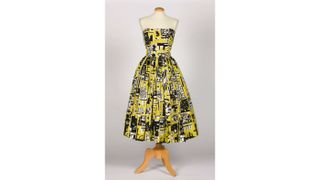
A new chronological exhibition at the Whitechapel Gallery will trace this evolution, reuniting some of his most influential pieces through his defining eras. The first section focuses on his early concrete works, which subscribed to the Brutalist aesthetic that flourished in the mid-20th century. It includes Seagull and Fish, and Blue Fisherman, two of four known sculptures made while he was a student at London's Slade School of Fine Art in 1946, brought together for the first time since his debut London exhibitions held the following year. Also on display will be examples of his textile, fashion and design works, such as the boldly pattered cocktail dress he made for fashion label Horrockses in 1953, which wouldn't look out of place on shelves today.
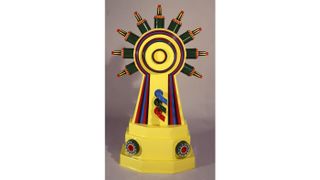
His experimentation with different mediums and processes carried through into the 1960s. A childhood spent working in the family sweet shop, where his father used to fix up old radios, can be seen in the playful Diana as an Engine, a gaudily coloured creation composed of mechanical parts. A similar aesthetic is expressed in pieces such as the four-metre-wide Whitworth Tapestry, and As Is When, one of the earliest examples of Pop Art printmaking in England.
Subscribe to The Week
Escape your echo chamber. Get the facts behind the news, plus analysis from multiple perspectives.

Sign up for The Week's Free Newsletters
From our morning news briefing to a weekly Good News Newsletter, get the best of The Week delivered directly to your inbox.
From our morning news briefing to a weekly Good News Newsletter, get the best of The Week delivered directly to your inbox.
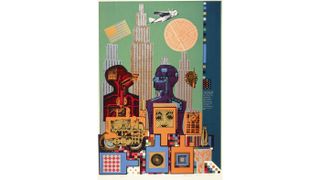
The diversity of his influences are explored as the exhibition progresses, from the series of screenprints Calcium Light Night from 1974, inspired by a musical composition of the same name by Charles Ives, to an archival display of Paolozzi's celebrated 1986 exhibition at London's Museum of Mankind titled Lost Magic Kingdoms, in which he selected and arranged a variety of materials from the museum's archives. The exhibition closes with his later works from the 1980s and 90s, as he took a renewed interest in figurative art as a rejection of the conceptual art popular at the time.
Eduardo Paolozzi is at the Whitechapel Gallery from 16 February to 14 May 2017, tickets from £10.50; whitechapelgallery.org
Create an account with the same email registered to your subscription to unlock access.
Sign up for Today's Best Articles in your inbox
A free daily email with the biggest news stories of the day – and the best features from TheWeek.com
-
Why is Tesla stumbling?
In the Spotlight More competition, confusion about the future and a giant pay package for Elon Musk
By Joel Mathis, The Week US Published
-
 How Taylor Swift changed copyright negotiations in music
How Taylor Swift changed copyright negotiations in musicunder the radar The success of Taylor's Version rerecordings has put new pressure on record labels
By Theara Coleman, The Week US Published
-
 Job scams are increasingly common. Here's what to look out for.
Job scams are increasingly common. Here's what to look out for.The Explainer You should never pay for an application or give out your personal info before being hired
By Becca Stanek, The Week US Published
-
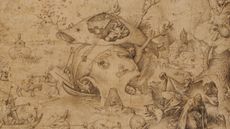 Five exhibitions to visit this spring
Five exhibitions to visit this springThe Week Recommends From 'subversive' textiles to exquisite Flemish drawings, there's something for every art lover
By Adrienne Wyper, The Week UK Published
-
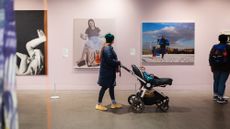 The art world and motherhood: the end of a final taboo?
The art world and motherhood: the end of a final taboo?Talking Point Hettie Judah's new touring exhibition offers a 'riveting riposte' to old cliches
By Chas Newkey-Burden, The Week UK Published
-
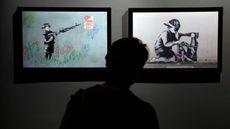 Glasgow to host first Banksy solo show in 14 years
Glasgow to host first Banksy solo show in 14 yearsSpeed Read The return of the ever-elusive street artist has experts and fans excited
By Rebekah Evans Published
-
 How to buy contemporary art
How to buy contemporary artIn Depth Curator Michael Doohan on how to get going on your art collection
By Michael Doohan Last updated
-
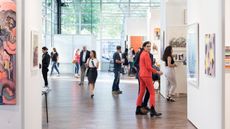 How to invest in the art stars of the future
How to invest in the art stars of the futureIn Depth Expert Ryan Stanier explains how to spot the new names whose work may go on to soar in value
By Ryan Stanier Last updated
-
 Basquiat at the Barbican: Boom for Real
Basquiat at the Barbican: Boom for RealIn Depth Curator Eleanor Nairne talks about the influences to be found in the pioneering work of Jean-Michel Basquiat in his first UK retrospective
By The Week Staff Last updated
-
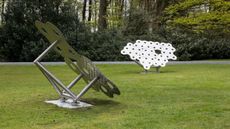 Some Time: Richard Deacon at Antwerp's Middelheim Museum
Some Time: Richard Deacon at Antwerp's Middelheim MuseumIn Depth The Turner Prize-winning artist and 'master of abstract sculpture' unveils his first solo outdoor exhibition at the historic sculpture park
By Gemma Billington Published
-
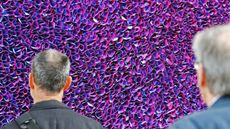 What to buy at the Art & Antiques Fair Olympia
What to buy at the Art & Antiques Fair OlympiaIn Depth After 25 years in the trade, Mary Claire Boyd knows a thing or two about building a collection and scouting for top investment pieces
By Mary Claire Boyd Last updated